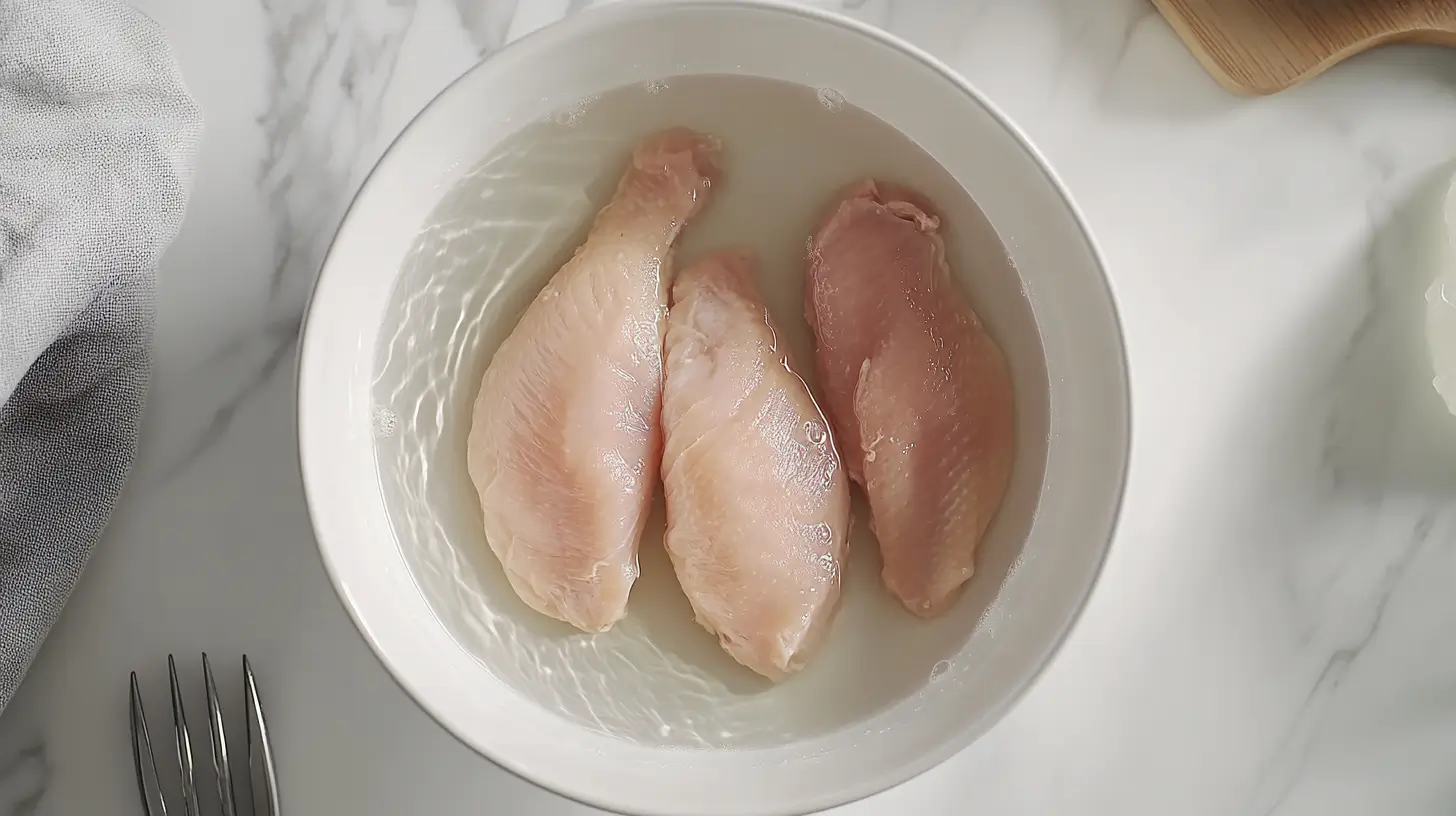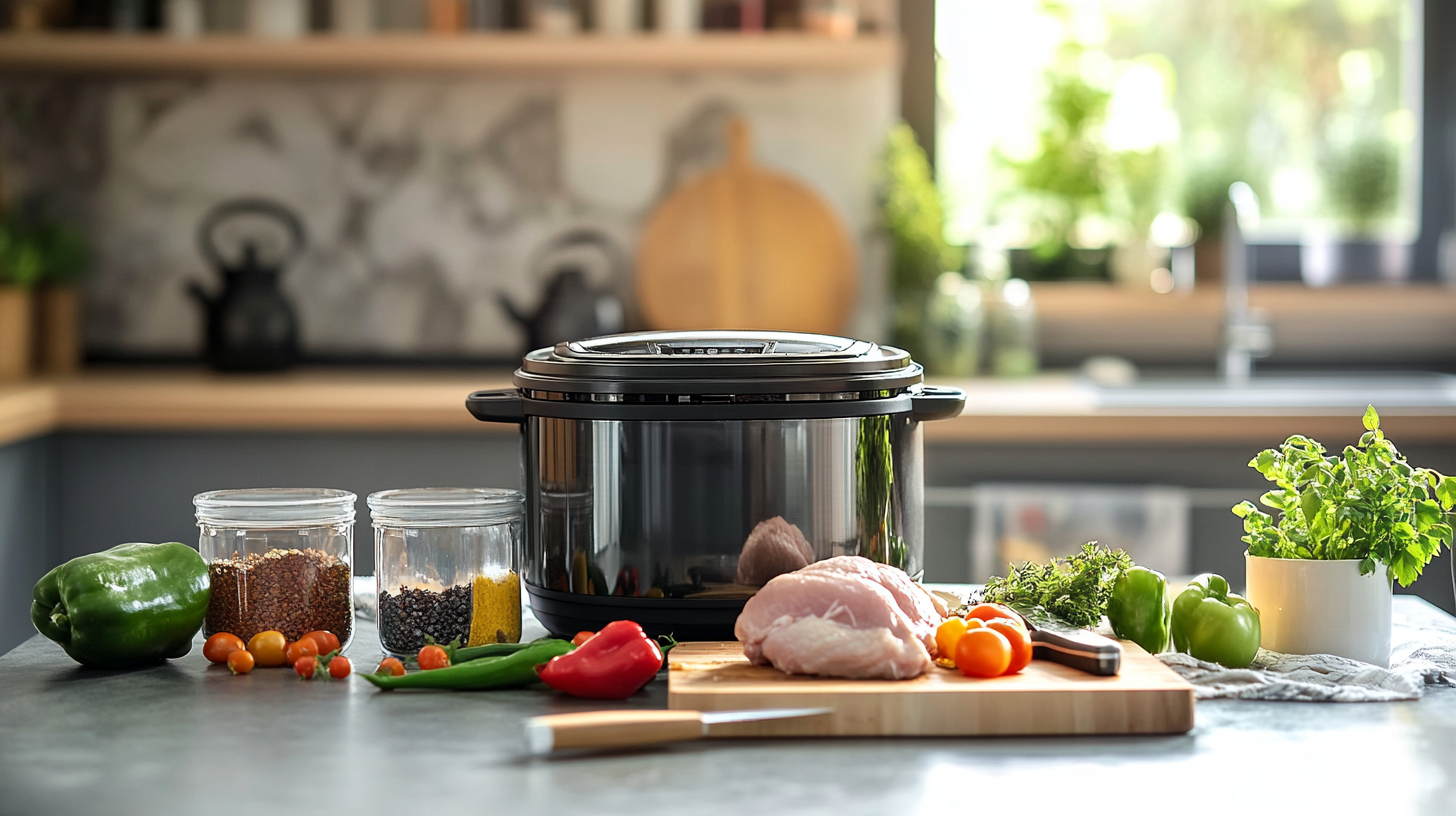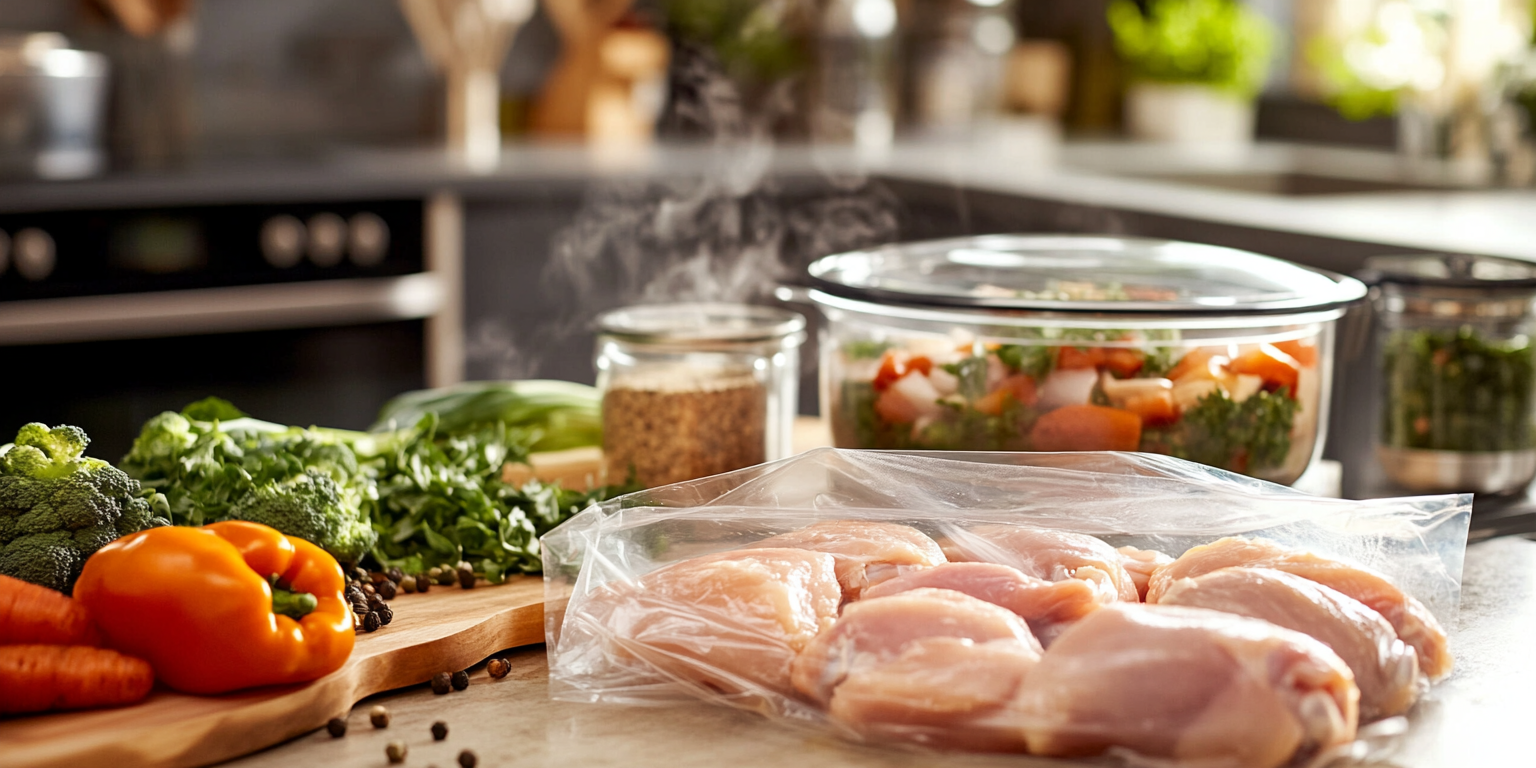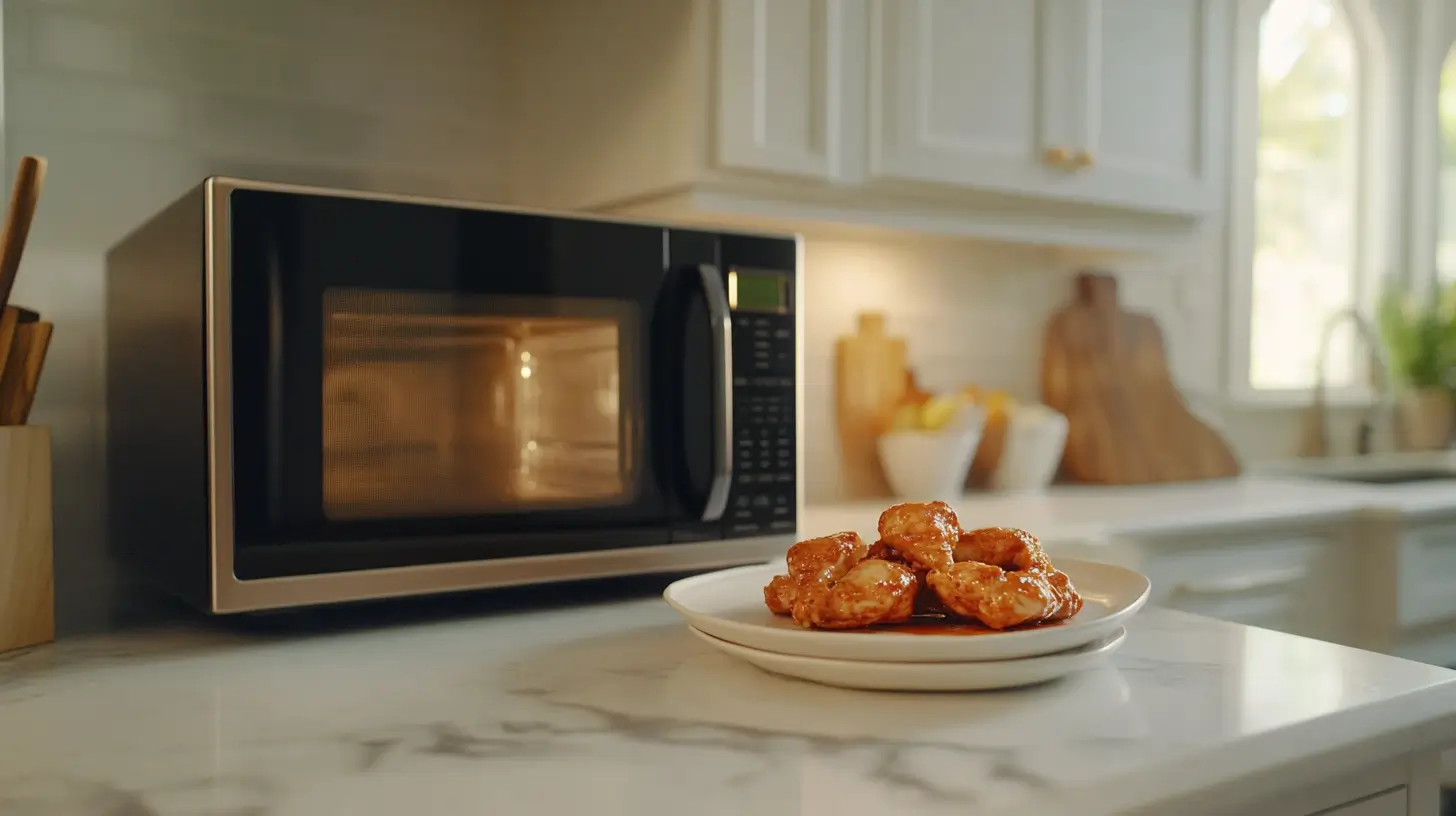When time is of the essence, understanding how to quickly defrost frozen chicken can save your meal plans while ensuring food safety. This guide covers essential methods, potential risks, and practical tips for safely thawing chicken without compromising its quality.
Understanding the Importance of Proper Defrosting
Why Defrosting Chicken Quickly and Safely Matters
Defrosting chicken is a critical step in meal preparation. Ensuring it is thawed properly preserves its taste, texture, and nutritional value while minimizing the risk of foodborne illnesses. Chicken left at unsafe temperatures for extended periods can encourage bacteria like Salmonella and Campylobacter to thrive. By knowing how to quickly defrost frozen chicken using safe methods, you protect your health and enhance your cooking process.
Quick defrosting methods also allow flexibility in meal preparation. Forgot to take the chicken out of the freezer? No problem. With the right approach, you can defrost it efficiently while maintaining safety standards. Remember, food safety is paramount, and improper handling can have severe consequences.
Risks of Improper Defrosting Methods
Improper defrosting methods can lead to uneven thawing, creating warm spots where bacteria proliferate. Common mistakes, such as leaving chicken on the countertop for hours, can compromise both the quality and safety of your food. To avoid these pitfalls, it’s essential to understand how to quickly defrost frozen chicken using proven, safe methods.
Key risks include:
- Growth of harmful bacteria in unsafe temperature zones.
- Deterioration of chicken texture due to partial cooking during defrosting.
- Potential cross-contamination in shared kitchen spaces.
By following the methods outlined in this guide, you can mitigate these risks and prepare your meals with confidence.
Quick Methods for Defrosting Chicken
Method 1: Using the Microwave
When you’re pressed for time, the microwave offers a convenient solution for how to quickly defrost frozen chicken. Modern microwaves often come equipped with defrost settings that make the process straightforward.
Step-by-Step Guide to Microwave Defrosting
- Prepare the chicken: Remove any packaging or Styrofoam trays. Place the chicken in a microwave-safe dish.
- Set the microwave: Use the defrost setting or adjust the power to 30% for gentle thawing.
- Monitor progress: Check and flip the chicken every 2-3 minutes to ensure even thawing.
- Use immediately: Cook the chicken right after defrosting to prevent bacterial growth.
Common Mistakes to Avoid When Using the Microwave
- Skipping regular checks: Uneven defrosting can lead to partially cooked spots.
- Not removing packaging: Plastic or Styrofoam can melt, contaminating the chicken.
- Over-defrosting: Leaving chicken in the microwave too long can dry it out.
Method 2: Cold Water Bath
The cold water bath is a tried-and-true method for safely defrosting chicken within an hour. It’s an excellent solution if you lack a microwave or prefer a gentler approach.
How to Set Up a Cold Water Bath for Defrosting
- Choose a large container: Fill it with cold water (not warm or hot).
- Submerge the chicken: Place the chicken in a leak-proof plastic bag to prevent contamination and immerse it in the water.
- Change the water: Replace the water every 30 minutes to maintain a cold temperature.
- Check progress: Thawing typically takes 30 minutes to an hour, depending on the chicken’s size.
Tips to Ensure Safety During This Method
- Keep the water cold: Warm water encourages bacteria growth.
- Avoid direct contact with water: Always use a sealed plastic bag to protect the chicken.
- Cook immediately: Once defrosted, cook the chicken right away to maintain freshness.
Method 3: Cooking Chicken Directly from Frozen
When there’s no time for defrosting, cooking frozen chicken directly is a viable option. It’s not only safe but can also yield delicious results with the right techniques.
Best Practices for Cooking Frozen Chicken Safely
- Adjust cooking times: Cooking chicken from frozen takes about 50% longer than thawed chicken.
- Use a meat thermometer: Ensure the internal temperature reaches 165°F (74°C) to confirm doneness.
- Start with lower heat: Begin with medium heat to allow the chicken to thaw slightly as it cooks evenly.
- Avoid overcrowding: Cooking too much chicken at once can result in uneven cooking.
Recipe Ideas for Cooking Frozen Chicken
- Frozen Chicken Stir-Fry: Cut frozen chicken into smaller pieces and stir-fry with vegetables for a quick, balanced meal.
- Baked Chicken Breasts: Season frozen chicken breasts with herbs and bake at 375°F (190°C) until fully cooked.
- Instant Pot Chicken Soup: Place frozen chicken in an Instant Pot with broth and vegetables for a hearty soup in under an hour.
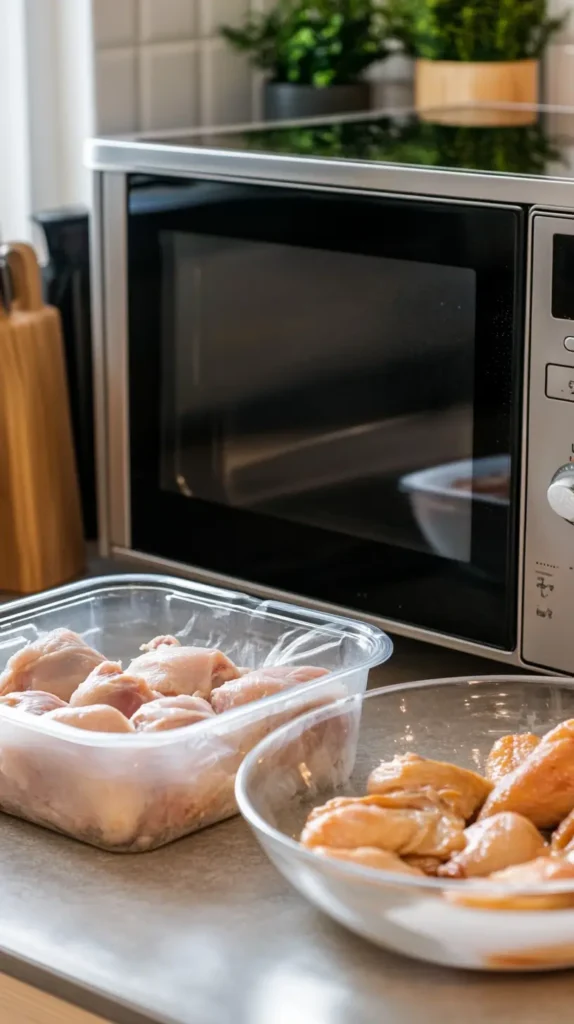
Defrosting Chicken Using Natural Methods
Method 4: Refrigerator Defrosting
When time permits, refrigerator defrosting is the safest and most reliable method. It requires minimal effort while ensuring the chicken remains at a safe temperature throughout the process.
Why This Method is Ideal for Meal Planning
Refrigerator defrosting is perfect for those who plan meals in advance. By placing chicken in the refrigerator, you allow it to thaw gradually, preserving its texture and taste. This method also eliminates the risk of bacteria growth, as the chicken remains consistently cold.
Additionally, refrigerator defrosting minimizes food waste since defrosted chicken can remain safe to use for up to two days. It’s ideal for busy households where meal prep is essential for efficiency.
How Long Does It Take?
The time required for refrigerator defrosting depends on the size of the chicken:
- Chicken breasts: 12-24 hours.
- Whole chicken: 24-48 hours.
- Chicken thighs or wings: Approximately 12-18 hours.
Although slower than other methods, this approach guarantees food safety and optimal flavor retention.
Method 5: Countertop Defrosting (Why It’s Not Recommended)
While tempting due to its simplicity, countertop defrosting is not a recommended method for how to quickly defrost frozen chicken. Leaving chicken at room temperature creates an ideal environment for bacteria to multiply rapidly, increasing the risk of foodborne illness.
The “danger zone” for food temperatures ranges between 40°F and 140°F, where bacteria grow most rapidly. Chicken left on the countertop quickly enters this zone, compromising its safety. To ensure your meals remain safe, opt for the other methods described earlier, such as refrigerator thawing or a cold water bath.
Tools and Accessories to Make Defrosting Easier
Essential Kitchen Tools for Quick Defrosting
Having the right tools on hand simplifies how to quickly defrost frozen chicken. These essentials make the process faster and more effective:
- Microwave with a defrost setting: Perfect for last-minute defrosting.
- Large, leak-proof plastic bags: Ideal for cold water baths to prevent contamination.
- Food thermometer: Ensures the chicken is thawed or cooked to a safe internal temperature.
- Bowl or basin: Useful for setting up cold water baths.
Investing in these tools streamlines defrosting, helping you handle chicken safely and efficiently.
Accessories to Maintain Food Safety
To maintain food safety during defrosting, consider these accessories:
- Cutting boards with juice grooves: Prevent cross-contamination by keeping raw chicken juices contained.
- Disposable gloves: Reduce the risk of transferring bacteria during handling.
- Antibacterial kitchen spray: Essential for cleaning surfaces after working with raw chicken.
These items not only make defrosting easier but also help you uphold strict hygiene standards in your kitchen.

Common Defrosting Mistakes to Avoid
Using Hot Water for Defrosting
Although it might seem like a faster solution, using hot water to defrost chicken is a significant mistake. Hot water can partially cook the outer layers of the chicken while leaving the inside frozen, creating uneven defrosting. This method also pushes the chicken into the danger zone for bacterial growth.
Instead, opt for cold water baths or microwave defrosting to ensure the chicken thaws safely and evenly.
Leaving Chicken at Room Temperature
As mentioned earlier, leaving chicken on the countertop is risky due to rapid bacterial growth at room temperature. Even if the chicken feels cool to the touch, the internal temperature may have already entered the danger zone. Always use safe defrosting methods to protect your health.
Ignoring Food Safety Guidelines
Neglecting proper hygiene and safety practices during defrosting can lead to cross-contamination. For example, placing chicken directly on kitchen counters or failing to clean utensils afterward increases the risk of spreading harmful bacteria. By adhering to food safety guidelines, you can confidently prepare meals without worry.
FAQs on How to Quickly Defrost Frozen Chicken
How do you defrost chicken quickly?
To defrost chicken quickly, use the microwave or a cold water bath. The microwave offers the fastest solution by utilizing its defrost setting or low power mode, allowing you to thaw chicken in minutes. Alternatively, a cold water bath is a reliable and safe method. Place the chicken in a leak-proof plastic bag, submerge it in cold water, and replace the water every 30 minutes. Both methods are safe if followed correctly, but remember to cook the chicken immediately after thawing to prevent bacterial growth.
Is it OK to thaw frozen chicken in warm water?
No, it is not safe to thaw chicken in warm water. Warm water can cause the chicken to enter the “danger zone” (40°F to 140°F), where bacteria grow rapidly. This increases the risk of foodborne illness. Instead, always use cold water for defrosting. Cold water slows bacterial growth while still providing an efficient thawing process. To stay safe, avoid shortcuts involving warm or hot water.
How do you bring frozen chicken to room temperature quickly?
It’s not safe to bring frozen chicken to room temperature quickly. Leaving chicken at room temperature creates an environment conducive to bacterial growth. Instead, use safer methods like a microwave or cold water bath to thaw chicken. Both methods can significantly reduce thawing time without compromising food safety. Once thawed, cook the chicken promptly to avoid leaving it at unsafe temperatures.
Is it safe to defrost chicken in the microwave?
Yes, it is safe to defrost chicken in the microwave when done correctly. Modern microwaves have defrost settings designed to thaw chicken evenly and safely. Place the chicken in a microwave-safe dish, use the defrost setting or set the power to 30%, and check progress every few minutes. Rotate or flip the chicken to ensure even thawing. However, cook the chicken immediately after defrosting to minimize bacterial growth. Avoid leaving it in the microwave for extended periods after thawing.
Conclusion: The Safest and Fastest Way to Defrost Chicken
Knowing how to quickly defrost frozen chicken is a fundamental kitchen skill that balances convenience with food safety. Among the methods discussed:
- Use the microwave for quick, last-minute defrosting.
- Opt for a cold water bath for a safe and moderately fast solution.
- Try refrigerator thawing when time permits for the safest and most reliable results.
Avoid unsafe practices like using hot water or leaving chicken at room temperature, and equip your kitchen with tools that make defrosting easier. With these tips, you can ensure every meal is both safe and delicious.


